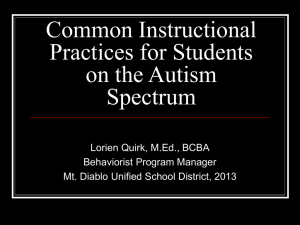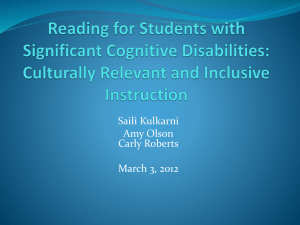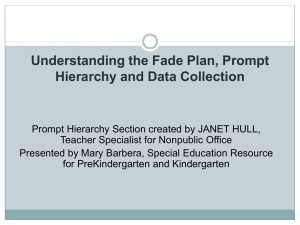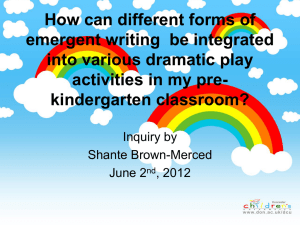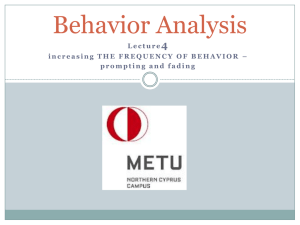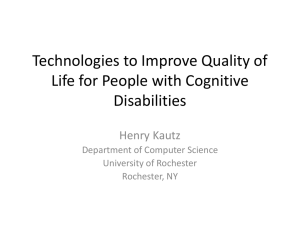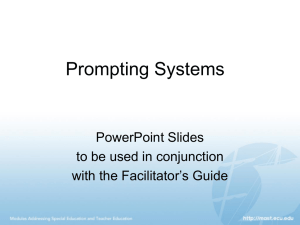Prompting
advertisement
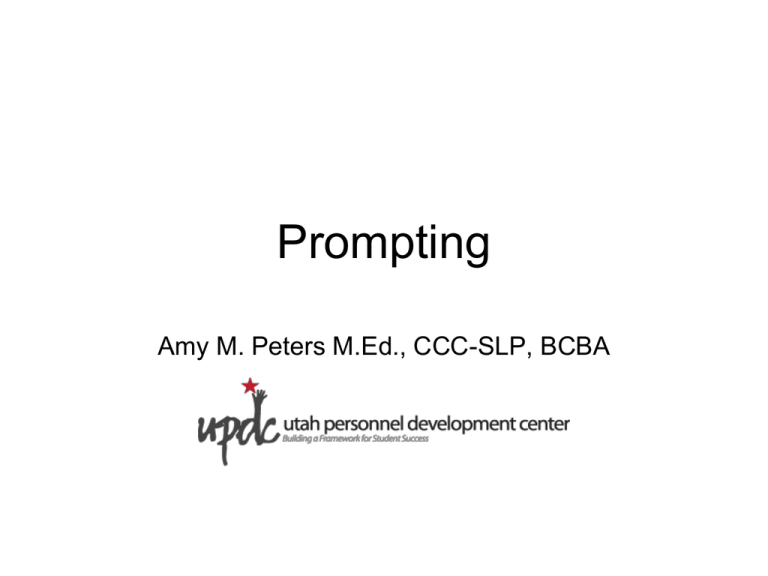
Prompting Amy M. Peters M.Ed., CCC-SLP, BCBA What is a prompt? • A prompt is extra information that helps a learner make a correct response – Prompts are faded • Prompting is used when the learner is not obtaining a desired skill independently • Using prompts increases errorless learning 3 Keys to success • Add as little as possible to help the learner succeed • Remove (fade) the prompts as soon as possible • Consider that certain types of prompts are easier to fade Who requires prompting? • At some point, all learners will need some form of prompting • Careful prompting is most important with moderate severe or profound disabilities Types of Prompts • Verbal • Gestural • Modeling • Textual • Manual • Spatial Verbal Prompting • Spoken cues that instruct a learner to perform a certain activity – Usually paired with other types of prompting – Difficult to fade • The learner must be able to understand and follow verbal directions Modeling • The learner copies the action(s) of another person performing the desired behavior – In person – Video tape • The learner must be able to imitate the actions of another person • Modeling is usually paired with other types of prompting Manual Prompting • Manual prompting is physical guidance from another person • Most effective when the prompter cues the learner from behind – Hand over hand – Forearm – shoulder • It can be used in the absence of other types of prompting • Easier to fade than other prompting methods Gestural • Using an action to cue the learner – Pointing – Nodding – Motioning – Approving or disapproving looks • Used in combination with other types of prompting • May be difficult to fade Textual Prompts • Written information or instructions – Checklists – Scripts – Pictures Spatial • Arranging materials to highlight the correct response – Can be used in the absence of other types of prompting – Required preplanning Performance and Prompting • Incorrect response without a prompt – If this happens often, consider prompting • Incorrect response with a prompt – If this happens often, the prompt must be changed • Correct response with a prompt – If this happens often, fade prompt • Correct response without a prompt – Independence Prompt Dependence • A prompt is proven effective as a teaching strategy, if when removed, the learner responds to the cues in the natural environment • Prompt dependence occurs when the learner responds to the prompts rather than cues in the natural environment • Reinforcement of prompted responses increases the probability of prompt dependence Prompt Fading • A prompt is only effective if it can be faded • Fading too soon results in errors in the target behavior • Prompting for too long results in prompt dependence Prompting Considerations • The learner • The environment • The ease of implementation • How you plan to fade the prompt? Choosing Prompt Procedures • Least-to-most procedures enables student to perform as independently as possible – Increase assistance as needed • Most-to-least procedures is used for rapid skill acquisition – Decreasing assistance • Rapid skill acquisition with fewer errors Conclusion • What is the role of the educator? – Finding prompts that work – Using prompts that lead to independence – Develop a plan to fade prompts
